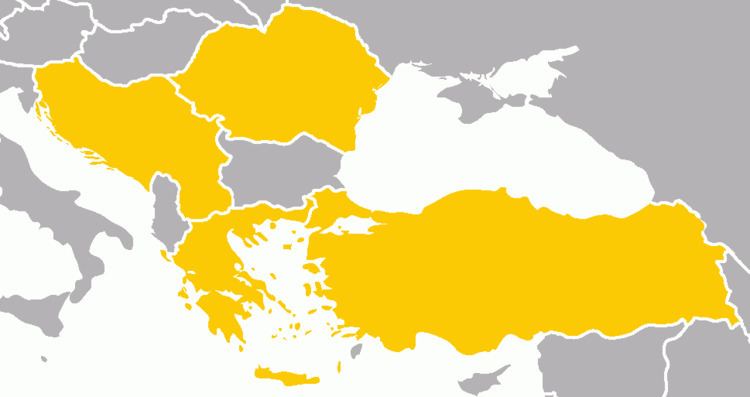Capital Not specified Historical era Interwar | Formation 9 February 1934 | |
 | ||
The Balkan Pact was a treaty signed by Greece, Turkey, Romania and Yugoslavia—the Balkan Entente—on February 9, 1934 in Athens, aimed at maintaining the geopolitical status quo in the region following World War I. The signatories agreed to suspend all disputed territorial claims against each other and their immediate neighbors following the aftermath of the war and a rise in various regional ethnic minority tensions. Other nations in the region that had been involved in related diplomacy refused to sign the document, including Italy, Albania, Bulgaria, Hungary, and the Soviet Union. Nonsignatories were mostly those governments with territorial expansion in mind (Though this simplistic interpretation hardly provides any insight into the motives of non-signatory countries). The pact became effective on the day it was signed. It was registered in the League of Nations Treaty Series on 1 October 1934.
The Balkan Pact helped to ensure peace between the signatory nations, but failed to stem regional intrigue. The countries of the pact surrounded Bulgaria, but on 31 July 1938 they signed an agreement with her in Salonika, repealing those clauses of the Treaty of Neuilly and Treaty of Lausanne that mandated demilitarised zones on the Greco-Bulgarian and -Turkish borders, and allowing Bulgaria to re-arm herself.
Subsequently, during World War II, a re-armed Bulgaria indeed attempted to forcibly challenge the status quo, but its alliance with the losing Axis powers ensured that its attempts remained unsuccessful.
